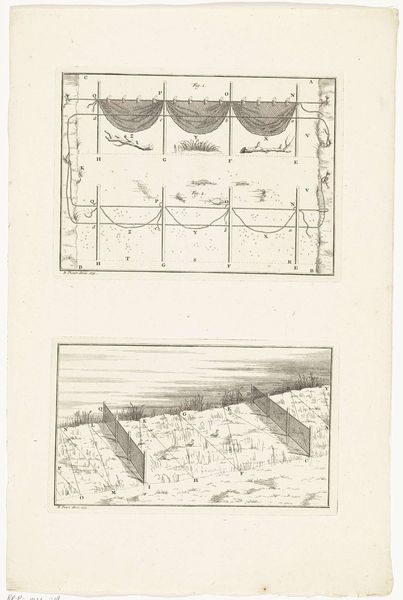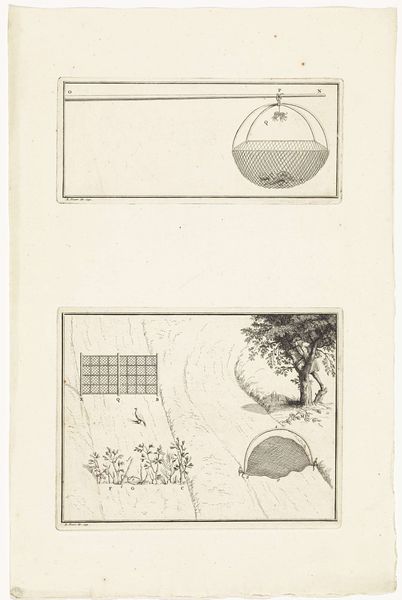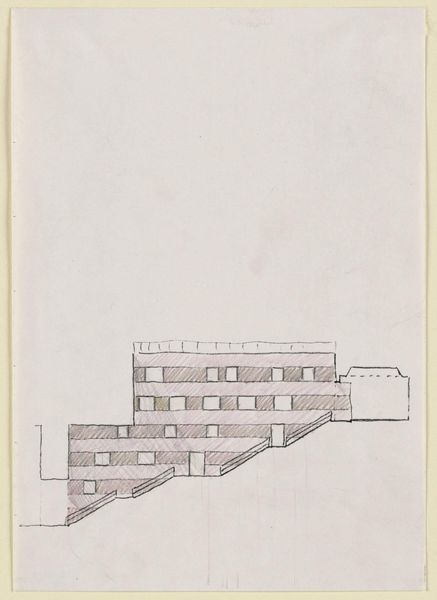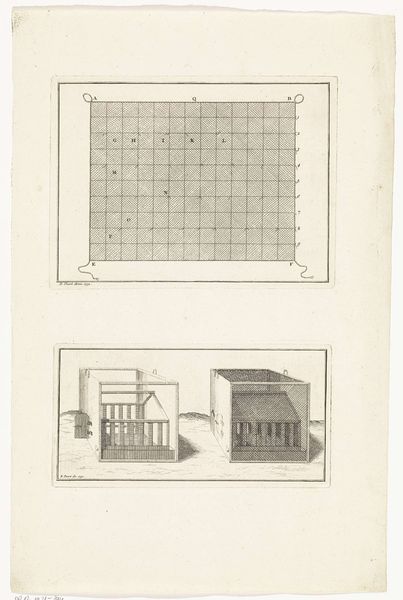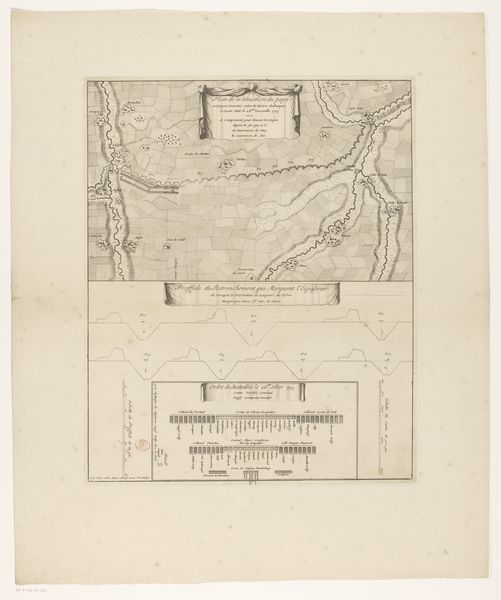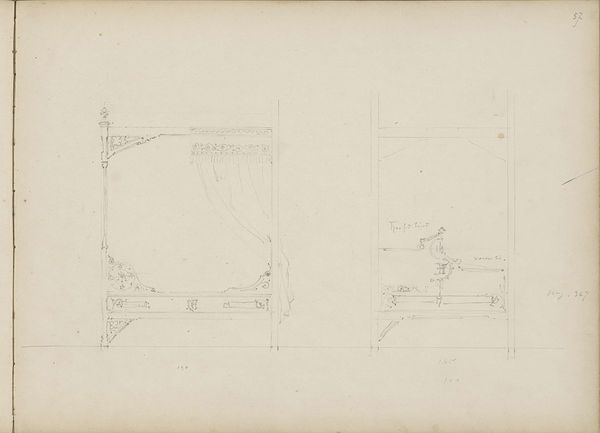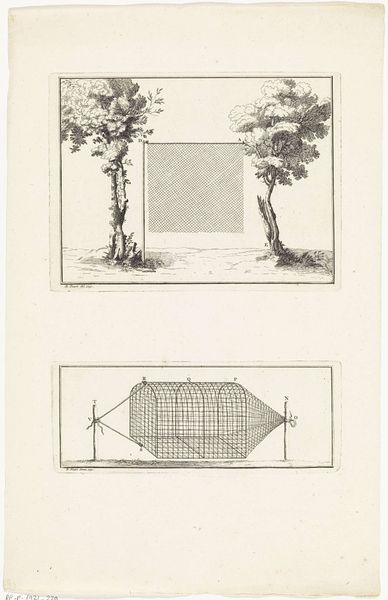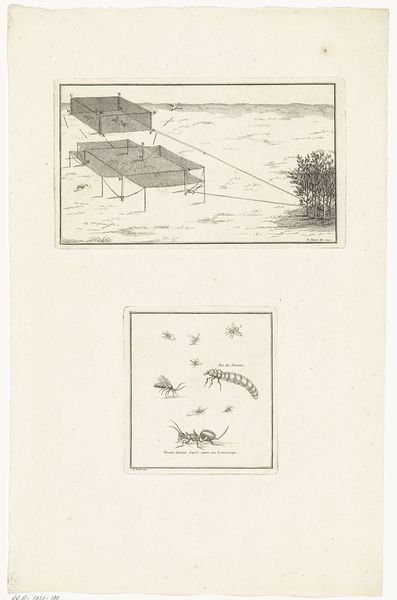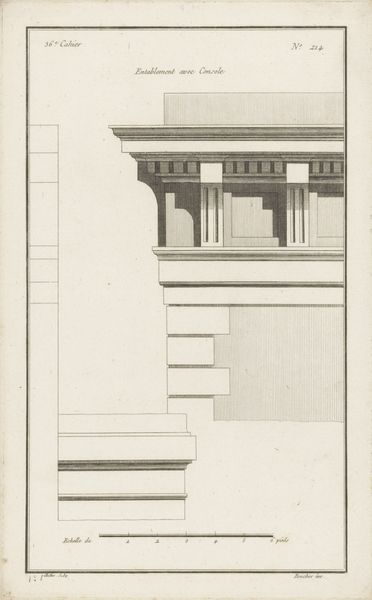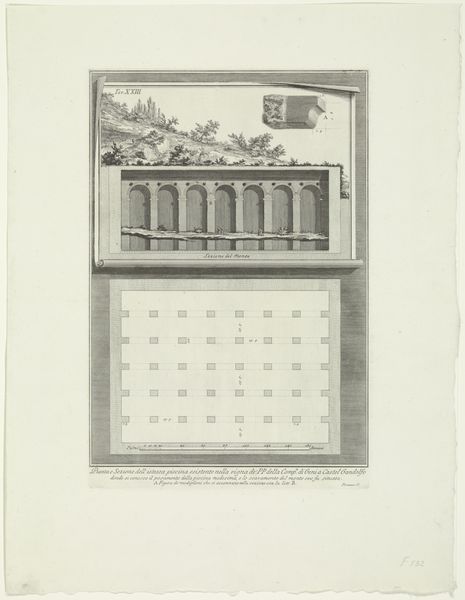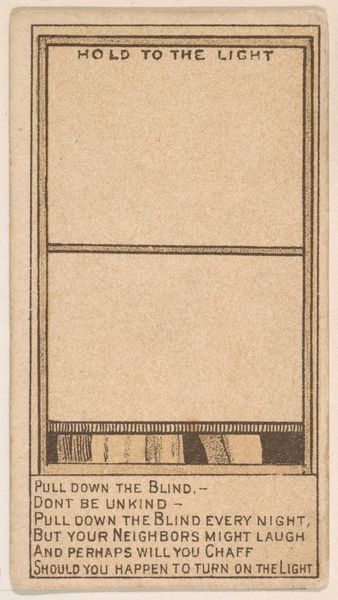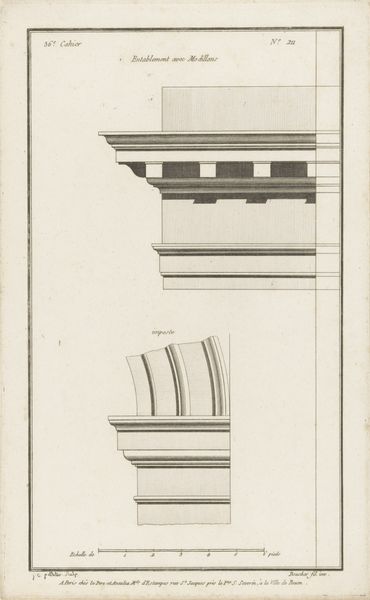
drawing, print, etching, engraving
#
drawing
#
baroque
# print
#
etching
#
etching
#
geometric
#
line
#
engraving
Dimensions: height 48 mm, width 184 mm, height 158 mm, width 183 mm, height 380 mm, width 251 mm
Copyright: Rijks Museum: Open Domain
Curator: Let's take a closer look at this engraving by Bernard Picart, titled "Platte kooi en dierenvallen," created around 1730. Editor: It strikes me as incredibly diagrammatic. There's a starkness to the lines, an almost clinical quality to the way these animal traps are depicted. I feel a real detachment despite the subject matter. Curator: Indeed. Picart's rendering reveals a methodical approach, doesn't it? As a historian, what jumps out is how this reflects a changing attitude toward nature in the 18th century. A growing desire to understand and control the natural world through categorization and even exploitation. Editor: From a materialist point of view, I see the careful etching technique, each line painstakingly placed to illustrate the construction of these traps. It emphasizes human labor involved in fashioning these devices. Think of the material sourcing, the joinery involved. This isn't just art, it's a record of practical, applied knowledge. Curator: Precisely. The "Platte kooi en dierenvallen" reveals both artistic skill and a period preoccupation with human ingenuity triumphing over nature. The traps, depicted so cleanly, almost take on an abstract, aesthetic quality themselves, which kind of hides its violent function. Editor: I'd say Picart wants to emphasize those practical elements. He highlights the intersections, the supports, making them legible to someone attempting to build their own. The print becomes a functional object in itself, instructions almost. But who was meant to view or buy this artwork at the time? Were these techniques new and cutting edge? Curator: It circulated amongst the educated middle class who enjoyed seeing evidence of technological innovation as a source of enlightenment and societal progress. Consider this piece in light of contemporaneous discussions regarding economic and social mobility... these traps supported individuals and communities. Editor: Thanks to Picart's skilled lines, this work continues to intrigue and reveal itself, despite the many years since its creation. Curator: An excellent reminder to be grateful for artworks like this, allowing glimpses of past approaches to life and ecology!
Comments
No comments
Be the first to comment and join the conversation on the ultimate creative platform.
